
The Philippine Navy (PN) is the naval warfare service branch of the Armed Forces of the Philippines. It has an estimated strength of 24,500 active service personnel, including the 8,300-strong Philippine Marine Corps. It operates 82 combat vessels, 14 auxiliary vessels, 25 manned aircraft and 8 unmanned aerial vehicles. It shares the responsibility of patrolling the maritime borders with the Philippine Coast Guard, a formerly attached unit which became a separate maritime law enforcement agency in 1998.
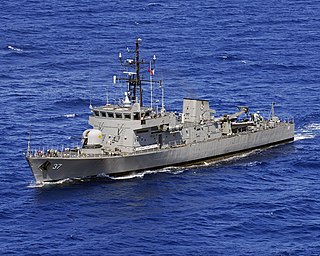
BRP Artemio Ricarte (PS-37) is third ship of the Jacinto-class corvettes currently assigned to the Offshore Combat Force of the Philippine Fleet. She is one of few ships in the Philippine Navy equipped with modern systems after the completion of combat, navigation and weapon systems upgrade of her class in August 2019. She was originally called HMS Starling (P241) during her service with the Royal Navy.

The BRP Dagupan City (LS-551) is the second and last ship of two Bacolod City class logistics support vessel, and is based on a helicopter capable variant of the US Army Frank S. Besson class. She is also considered one of the most modern transport ships in the Philippine Navy, having been commissioned during the early 1990s. She was previously known as BRP Dagupan City (LC-551) prior to a classification change implemented by the Philippine Navy starting April 2016

The BRP Rajah Humabon (PS-11) was a former destroyer escort of the United States Navy and a former frigate of the Philippine Navy. She was the last World War II-era destroyer escort/frigate active in her fleet, and one of the oldest active warships in the world, until 15 March 2018 when she was formally decommissioned after 75 years. She was one of three ex-USN Cannon-class destroyer escorts that served the Philippine Navy, the others being BRP Datu Sikatuna (PF-5/PS-77) and BRP Datu Kalantiaw (PS-76).

The BRP Quezon (PS-70) was one of two Rizal class ships in service with the Philippine Navy. She was formerly a USN Auk class minesweeper produced during World War II, and was later on classified as a patrol corvette protecting the vast waters of the Philippines.
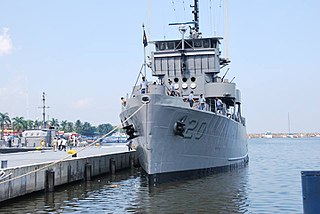
BRP Magat Salamat (PS-20) is one of several Miguel Malvar class of patrol corvettes in service with the Philippine Navy. She was originally built as USS Gayety (AM-239), an Admirable-class minesweeper with a similar hull to the PCE-842-class patrol craft produced during World War II. In 1962 she was transferred to South Vietnam for service in the Republic of Vietnam Navy as RVNS Chi Lang II (HQ-08). She was acquired by the Philippine Navy in April 1976 and later on commissioned as Magat Salamat. Along with other ex-World War II veteran ships of the Philippine Navy, she is considered one of the oldest active fighting ships in the world today.
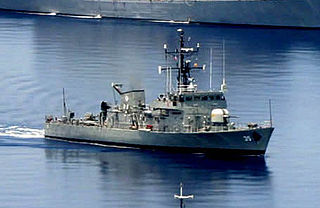
The BRP Emilio Jacinto (PS-35) is the lead ship of the Jacinto-class corvettes currently assigned to the Offshore Combat Force of the Philippine Fleet. She is one of few ships in the Philippine Navy equipped with modern systems after the completion of combat, navigation and weapon systems upgrade of her class in August 2019. She was originally called HMS Peacock (P239) during her service with the Royal Navy.

The Jacinto-class patrol vessels currently in service with the Philippine Navy are three ships formerly belonging to the Royal Navy's Hong Kong Squadron as Peacock-class corvettes until 1997. The ships have undergone combat, electronics, weapon, propulsion and hull upgrades, with the most recent upgrade completed in August 2019. These increased their capabilities compared to the original Peacock-class vessels.
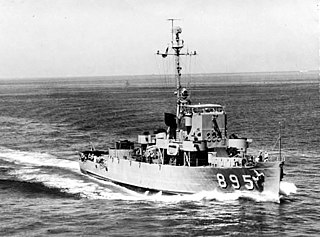
BRP Sultan Kudarat (PS-22) was a Miguel Malvar-class corvette of the Philippine Navy. She was originally built as USS PCE-881, a PCE-842-class patrol craft for the United States Navy during World War II. In 1961 she was transferred to South Vietnam for service in the Republic of Vietnam Navy as RVNS Đống Đa II (HQ-07). She was acquired by the Philippine Navy on April 1976, and was commissioned later on as RPS Sultan Kudarat (PS-22). Along with other World War II-era ships of the Philippine Navy, Sultan Kudarat was considered one of the oldest active fighting ships in the world, until her retirement in July 5, 2019.

The Bacolod City class is a ship class of two Logistics Support Vessels currently in service of the Philippine Navy, commissioned during the early 1990s. These ships were based on a helicopter capable variant of the United States Army's General Frank S. Besson, Jr. class Logistics Support Vessel.

BRP Tarlac (LD-601) is the lead ship of her class of landing platform docks in service with the Philippine Navy. She is the second ship to be named after the Philippine province of Tarlac, one of the provinces considered to have significant involvement in the Philippine Revolution of independence against Spain.

BRP Gregorio del Pilar (PS-15) is the lead ship of her class of offshore patrol vessel of the Philippine Navy. She is the second ship to be named after Gregorio del Pilar, a Filipino revolutionary general known for his role at the Battle of Tirad Pass. She was originally designated as "PF-15" from 2012 to mid-2016. Then the Navy adopted a new code designation system and she was redesignated as "FF-15". In February 2019, the Navy downgraded the status of the entire class from frigate to patrol ship and redesignated her to "PS-15".

BRP Ramon Alcaraz (PS-16) is the second ship of the Gregorio del Pilar-class offshore patrol vessels of the Philippine Navy. From 1968 to 2012, she was known as USCGC Dallas and served the United States Coast Guard as a high endurance cutter. She was decommissioned on 30 March 2012 and acquired by the Philippines under the Excess Defense Articles and the Foreign Assistance Act.

BRP Andrés Bonifacio (PS-17) is the third ship of the Gregorio del Pilar-class offshore patrol vessels of the Philippine Navy. She is the second ship of the Philippine Navy to be named after Andrés Bonifacio, a Filipino revolutionary leader, regarded as the "Father of the Philippine Revolution" and one of the most influential national heroes of the Philippines.
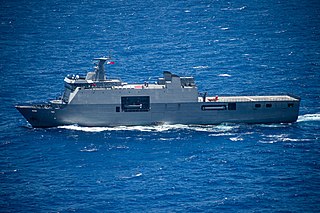
BRP Davao del Sur (LD-602) is the second ship of the Tarlac-class landing platform dock of the Philippine Navy. She is the second ship to be named after the Philippine province of Davao del Sur, one of the main provinces in Mindanao in Southern Philippines. She was launched on 29 September 2016 and was commissioned into service on 31 May 2017.
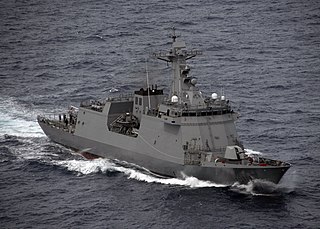
The Jose Rizal-class of multi-role guided missile frigates, currently in service with the Philippine Navy, are a heavily modified variant of the ROK Navy's Incheon-class frigates. The ships, which were built by Hyundai Heavy Industries (HHI), are specifically accommodated to fit the requirements of the Philippine Navy. The frigates will improve the ability of the Philippine Navy's Offshore Combat Force, which is mostly composed of ships that were retired from other countries and subsequently transferred to the Philippines.

BRP Jose Rizal (FF-150) is the lead ship of her class of guided missile frigates of the Philippine Navy. She is the first purpose-built frigate of the service, as its major warships were mostly obtained from retired patrol ships of other countries. She is also one of the navy's primary warships able to conduct multi-role operations, such as coastal patrol and anti-submarine warfare.

BRP Antonio Luna (FF-151) is the second ship of the Jose Rizal-class of guided missile frigates in service with the Philippine Navy. She is able to conduct multi-role operations such anti-surface warfare (ASUW), anti-submarine warfare (ASW), and limited anti-air warfare (AAW). She is one of the service's primary warships until the introduction of new and more powerful contemporaries.

Toribio Dulinayan Adaci Jr. is a Philippine Navy vice admiral who serves as the 40th and current Flag Officer-in-Command (FOIC) of the Philippine Navy. Prior to his appointment, Adaci previously commanded the Naval Forces Western Mindanao from 2020 to 2022, the Naval Installation Command, and Fleet-Marine Ready Force.



















